I Live My Life

Brief Synopsis
Cast & Crew
W. S. Van Dyke
Joan Crawford
Brian Aherne
Frank Morgan
Aline Macmahon
Eric Blore
Film Details
Technical Specs

Synopsis
While vacationing in the Greek islands, society girl Kay Bentley meets Terry O'Neill, a young archaeologist working on an important Naxos dig. At the mountaintop site of Terry's dig, Kay forgets to hitch her mule to a post and finds herself stranded there. She feigns an ankle injury in order to get the serious-minded Terry to carry her down the hill and back to the village where her yacht is docked. Terry tells Kay that he feels nothing but contempt for the idle rich and says that the only thing he despises more than yachts is people who own yachts. After Terry lectures Kay on the subject of the idle rich becoming too "soft," they arrive in the village, where Kay reveals that she had been faking her injury. Before she can get away, however, Terry grabs her, carries her back up the hill and forces her to walk back down herself. Later, Kay, intrigued by the handsome and stubborn scientist, pleads with the yacht's captain to turn the boat around and return to Naxos. Back on the island, Kay apologizes to Terry, who tells the young socialite the story of Pygmalion and admits that he has fallen in love with her. The two share a brief romance, and when Kay readies to leave, the lovestruck Terry promises to visit her in New York and asks for her address. Instead of giving her real name, however, Kay gives Terry the name of another woman at her office because she does not feel that a mere fling constitutes the seed of a permanent relationship. Terry is determined to see her again and sails to New York, accompanied by his assistant, Betty Collins, who realizes that the inexperienced lover may need some guidance in the romance department. Upon his arrival in New York, Terry discovers that he has been jilted by Kay, and attends a museum board of directors meeting, where the topic of discussion is a new archaeological acquisition. There he meets Kay's father, a board member who becomes interested in Terry's professional opinions and invites him to his home to continue their discussion. Kay is shocked when she finds Terry in her house, but quickly takes him to meet her wealthy friends as they are preparing to leave her party. Terry is introduced to Gene, whom Mrs. Gage, Kay's grandmother, intends for her to marry, and Gene snobbishly asks Terry if his firm handshake is a result of vigorous polo playing. Upset about the condescending attitude of Kay's friends, Terry tells her that they are nothing more than selfish, thoughtless and worthless people. Later, Kay learns that her father had privately invested $400,000 in a deal that is in danger of falling through unless she appeases her grandmother by marrying Gene. Hoping to save her father from financial ruin, Kay leaves for Connecticut, where she plans to announce her wedding to the acerbic Mrs. Gage, who owns her father's company. Kay regrets abondoning Terry when she learns that her father's deal went through successfully, and calls her sweetheart on Christmas Eve to apologize. Terry immediately departs for Mrs. Gage's residence, where his presence causes a great commotion in the house. The outraged matron nearly throws Terry out when she overhears him call her an "old battle-ax," but soon takes a liking to her future son-in-law and hires him at her company. Terry, however, flounders in the corporate setting and admits that he has no flair for business, longing instead for the freedom of the outdoors. A quarrel between the engaged lovers results in the last minute cancellation of their wedding. In order to save Kay the embarrassment of losing her groom at the altar, Terry agrees to show up at the wedding and play the part of the jilted suitor himself. Terry is surprised when Kay shows up for her wedding, and when asked if there is any reason why the couple should not be wed, Terry speaks up. Kay realizes that he has misunderstood her change of plans, mistaking her presence as a double-crossing, and quickly settles matters by telling him that she bought two tickets to Naxos, Greece.

Director
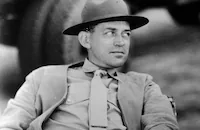
W. S. Van Dyke
Cast
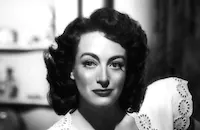
Joan Crawford
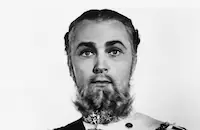
Brian Aherne
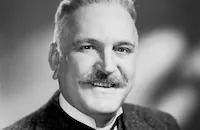
Frank Morgan

Aline Macmahon

Eric Blore
Fred Keating

Jessie Ralph

Arthur Treacher

Frank Conroy

Etienne Girardot
Esther Dale

Hale Hamilton
Hilda Vaughn
Frank Shields

Sterling Holloway

Vince Barnett
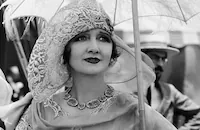
Hedda Hopper

Lionel Stander
Tom Dugan
Tom Mahoney

Edward Brophy
Jane Barnes
Jan Duggan

Nella Walker
Betty Jean Hainey
Harry Semels

John George
Nick De Ruiz
Ronnie Cosbey
Richard Hemingway
Gladden James
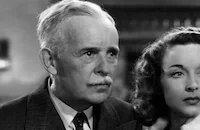
Howard C. Hickman
Sarah Edwards
Marion Clayton
George Baxter
Finis Barton
Freeman Wood
Barbara Worth
Alain Chandor
Agnes Anderson
Harry C. Bradley
Harry Tyler
Charles Bennett
Armand "curly" Wright

Leonid Kinskey
Beth Marion
Carl Stockdale
Harry Depp
Clark Marshall

Harold Huber
Wally Maher

Henry Kolker
Shirley Jean Rickert
Buster Phelps
Adrian Rosley
Blanche Craig
Howard Wilson
Arthur Stuart Hull
Crew
Adrian
Ethel Borden
George Folsey
Cedric Gibbons
Tom Held
Bernard H. Hyman
Joseph L. Mankiewicz
Joe Newman
Merrill Pye
Gottfried Reinhardt
Douglas Shearer
Dmitri Tiomkin
W. S. Van Dyke
Charles Wallace
Edwin B. Willis

Videos
Movie Clip


Trailer
Film Details
Technical Specs

Articles
I Live My Life (1935) - I Live My Life
That's the theme of the eponymous movie starring Joan Crawford as Kay, a sophisticated socialite who thinks her life is just about perfect, and Brian Aherne as Terry, a hard-working archeologist who feels the same way about his. They get acquainted when Kay travels to Greece on a yacht belonging to her family's prosperous company. Taking leave of her fiancé to explore the picturesque island of Naxos, she stumbles on an archeological dig where Terry is dusting off an ancient statue he discovered recently. Their meeting follows the standard screwball-comedy pattern: first banter, then friction, then sparks beginning to fly.
Kay is so fascinated by Terry that she sweet-talks the yacht's captain into cancelling the next stop so she can visit Naxos a second time. She tracks Terry down in an island restaurant so unsophisticated that every dish is called roast beef, and before long they're smooching in the shadows. Kay detects that Terry is prejudiced against the upper class, though, so she impulsively decides to level the playing field by telling him she's a mere secretary on the company yacht. She also forgets to mention that she's engaged to a young man who travels in her own privileged set.
Following her to New York with marriage in mind, Terry soon learns the truth about Kay's extremely affluent family. But his love is strong enough to conquer the awful threat of becoming fabulously rich, so wedding plans are soon under way. Then complication strikes. Although the family firm is flourishing, Kay's dad has been speculating with his private money, and his latest venture has brought a loss of $400,000 - real money in 1935, when the Great Depression was ravaging Americans, including many people in this movie's first-run audience. As a result, Kay faces a dilemma. Should she follow her heart and marry the archeologist she adores? Or return to her high-society fiancé and use his money to bail her father out? While she's mulling over her options, Terry lets himself be high-pressured into taking a vice-presidency at the family business, and the office routine is bringing back the claustrophobia that drove him into archeology to begin with. Tensions rise, indecision mounts, and it starts to look like Kay and Terry have lives too dissimilar to unite in matrimony.
MGM invested top-drawer talent in I Live My Life, starting with screenwriter Joseph L. Mankiewicz, who had joined the studio in 1933 and shown an instant flair for working with Crawford, scoring a hit with his script for Forsaking All Others in 1934. After their repeat performance with I Live My Life the following year, Louis B. Mayer promoted Mankiewicz to producer and assigned him to Crawford's subsequent pictures. According to Crawford biographer Bob Thomas, most of the studio's producers still thought of her as "that chorus girl," whereas Mankiewicz understood the nature of her appeal. "She is not demonstrably a proficient actress," Mankiewicz explained, "nor is she identifiably a sexpot. But she is on a level that lower-middle-class audiences can identify with." When critics complained that Crawford played shop girls wearing Adrian gowns, Mankiewicz told the actress not to worry. Real shop girls go to Joan Crawford movies to watch a "fantasized version" of their own lives, he said, adding that an ordinary woman "doesn't want to see you in a housedress with armpit stains. She wants to see you dressed by Adrian, as she would like to be."
I Live My Life generously delivers in that department, draping Crawford in Adrian gowns that make Cedric Gibbons's sets appear drab by comparison. Here she is with a snazzy bowtie under her chin, a little crooked to show she's a little kooky; there she is with the widest, whitest lapels in the entire Social Register; a Christmas party calls for the season's shiniest lamé; in this headdress she looks like the Statue of Liberty; in that one she resembles a milkmaid; and so on, usually in bold black-and-white patterns that nicely offset the business suits and tuxedos sported by most of the males in the story. MGM didn't stint on Crawford's makeup, either. One has to agree with the Variety critic whose 1935 review warned that "if her eyelashes continue getting any longer her leading men will have to start wearing bumpers."
All this is fun, but the picture's best asset is its supporting cast, populated by some of MGM's best character players. Frank Morgan is lovably ditzy as Kay's devoted dad; Sterling Holloway lends his unique voice and face to Max, an archeological assistant; Eric Blore is deliciously snooty as Kay's butler, who has a golden heart; Arthur Treacher is even snootier as her grandmother's butler, who has no heart at all; and Jessie Ralph is perfect as the grandma, an iron-fisted dowager who realizes at one point that she's smiling and immediately corrects her error, putting on the scariest scowl this side of a 3-D horror movie. Hedda Hopper and Lionel Stander show up briefly as well.
With so much going for it, it's surprising that I Live My Life fails to sparkle most of the time. Part of the blame goes to the stars. Aherne is too glib and earnest to make Terry a convincing comic character, and Mankiewicz could have added a lack of comic pizzazz to his list of Crawford's deficiencies. Beyond this, there simply isn't much chemistry between them. When a sensational screwball couple like Katharine Hepburn and Spencer Tracy pummel each other with quarrelsome words, you still feel the irresistible attraction that ties them together no matter what; but try as they may, Crawford and Aherne generate only a fraction of the necessary heat. Mankiewicz's screenplay also miscalculates, laying out the advantages of both lifestyles in the story - the socialite's fizzy fun, the scientist's rewarding work - so persuasively that you find yourself rooting for the duo not to get married. Why should they let matrimony mess up the obvious contentment they've achieved on their own? The director, W.S. Van Dyke, does little to compensate for these problems, moving the plot along in a largely run-of-the-mill manner.
I Live My Life did well with reviewers anyway. New York Times critic Andre Sennwald described Crawford as "rather self-consciously adequate to the needs of her part" but found Aherne to be "excellent" and praised Van Dyke for his "lively production." Variety opined that "everything's nicely done, from dialog reading to diaphragm heaving." The critic also noted that Terry does a lot of preaching about the joys of poverty, but added that "the moralizing is nicely and not too seriously done, so that audiences will not be asked to believe it." My opinion is closer to that of Richard Watts, Jr., who wrote in the New York Herald Tribune that the picture "is a pretty routine bit of storytelling," but if you're "an enthusiast for the regulation type of Crawford vehicle, you may find the work soul-satisfying. The star plays handsomely and competently." Whether she plays excitingly is another question.
Director: W.S. Van Dyke
Producer: Bernard H. Hyman
Screenplay: Joseph L. Mankiewicz; from the story by Gottfried Reinhardt and Ethel Borden; based upon a short story by A. Carter Goodloe
Cinematographer: George Folsey
Film Editing: Tom Held
Art Direction: Cedric Gibbons
Music: Dimitri Tiomkin
With: Joan Crawford (Kay), Brian Aherne (Terry), Frank Morgan (Bentley), Aline MacMahon (Betty), Eric Blore (Grove), Fred Keating (Gene), Jessie Ralph (Mrs. Gage), Arthur Treacher (Gallup), Frank Conroy (Doctor), Etienne Girardot (Professor), Esther Dale (Brumbaugh), Hale Hamilton (Uncle Carl), Hilda Vaughn (Ann Morrison), Frank Shields (Secretary), Sterling Holloway (Max), Vince Barnett (Clerk), Hedda Hopper (Alvin's Mother), Lionel Stander (Yaffitz), Tom Dugan (Guard)
BW-97m.
by David Sterritt

I Live My Life (1935) - I Live My Life
Quotes
Trivia
A different ending was shot for the British release, which toned down the behavior of Brian Aherne at the wedding.
Notes
Working titles for this film were Glitter and If You Love Me. Abbie Carter Goodloe received the O. Henry Memorial Award for the short story on which this film is based. According to a Hollywood Reporter news item, a revised ending of the film was shot for the British release in order to prevent possible protestations from the English church, which might have deemed "Terry's" behavior at the marriage altar as too upsetting. According to censorship material in the MPAA/PCA Collection at the AMPAS Library, the PCA, after reviewing the script for the film, insisted that the statue of Galatea be draped, and that all shots of the statue be done in "good taste." More specifically, the PCA demanded that "Bentley...not be shown with his hand on Galatea's rump." Although Hollywood Reporter production charts list Jean Hersholt and Ralph Morgan in the cast, they did not appear in the released film. Hollywood Reporter production charts and news items list Rudolph Amendt, Shirley Ross Broderick O'Farrell, Adrienne d'Ambricourt and Leona Maricle in the cast, but their appearance in the released film has also not been confirmed. Though most contemporary sources name George Folsey as the sole photographer of this picture, a Hollywood Reporter production chart lists William Daniels. I Live My Life was filmed on location in Santa Catalina and Chatsworth, CA. According to a Daily Variety pre-release news item, an attempt was made to begin filming at the Santa Catalina Island location one month prior to the actual start date for production, but the crew was forced to return to the mainland due to heavy fog in the area.















